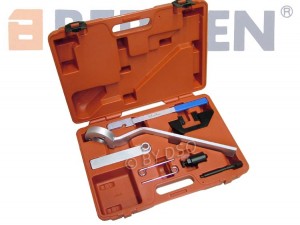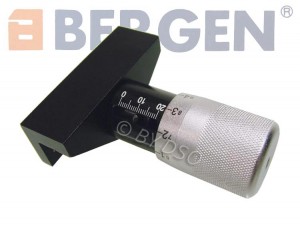 Belts in the car play such an important role but they are rarely considered whenever it is time for maintenance and repairs. Still, paying attention to the belts can ensure the smooth functioning of all the vehicle parts and your safety on the road.
Belts in the car play such an important role but they are rarely considered whenever it is time for maintenance and repairs. Still, paying attention to the belts can ensure the smooth functioning of all the vehicle parts and your safety on the road.
What is a Timing Belt?
The timing belt is the piece that synchronises the functioning of valves and pistons. The camshaft and the crankshaft are connected by it. The lack of perfect synchronisation will make it impossible for the car engine to run smoothly. The timing belt is the one piece responsible for achieving the goal.
The lack of tension will speed up its wearing out. Excessive tightness will damage bearings. When maintaining and repairing your car’s timing belt, you will have to achieve precision for optimal functioning of all parts.
Checking the tension is a monthly necessity. A car timing belt kit can be purchased and used for that purpose. It will save you both time and the money that you will otherwise have to spend on a professional service. When inspecting, make sure that the engine is not running. There is a serious risk of accidents in such instances.
Equipment Needed for Maintenance and Repairs
If you are interested in doing vehicle repairs on your own, you will have to invest in the right kind of equipment. The most commonly needed pieces for the maintenance include:
- Torque wrench
- A good screwdriver set
- Socket set
- Combination wrenches
- Jack and jack stands
- Drain pan
Bolts, pins and obviously a new timing belt will be needed, whenever you have to replace the old piece. Keep in mind that the equipment and the specifics of the procedure will very often depend on the vehicle kind and the model. There is no universal solution and you should learn more about the specifics of your car and its engine functioning.
 Causes of Problems and What to Look for
Causes of Problems and What to Look for
If you are used to working on your own car, you have certainly seen the timing belt. Do you, however, know what to look for in order to determine whether it is in good condition or in need of replacement?
Cracks, excessive slack and shredding are all causes of concern. If you notice such signs of aging, you should consider replacing the old piece.
The engine itself gets quite heated during functioning, which will cause natural damage to the timing belt. Other factors that will affect its condition and speed up the damage include oil leaks that could cause belt corrosion, infrequent driving and excessively dry climates that will damage the material that the belt is made of.
You will have to replace the timing belt at least once during your ownership of the vehicle. Routine inspections of its condition will give you an idea about when that might be. Having a car timing belt kit ready beforehand, will only be a convenience for you when the time comes. Taking a look on a monthly basis will prevent you from experiencing problems on the road, while you are away from home.
Author – Tony Heywood

Tony Heywood is a ‘Retail Troubleshooter’ with 40 years experience in the retail industry, specialising in e-commerce over the last decade. He has his own consultancy firm and is MD of ’e sell it’, an on-line store selling tools and auto-care products worldwide.
For tools & auto-care products at trade prices, please visit: www.esellit.com
Or call: 020 8201 0588
July 16th, 2013 on 3:31 am
Thanks for every other informative website. Where else may just I am getting that kind of info written in such a perfect approach? I have a venture that I’m just now running on, and I have been on the look out for such info.